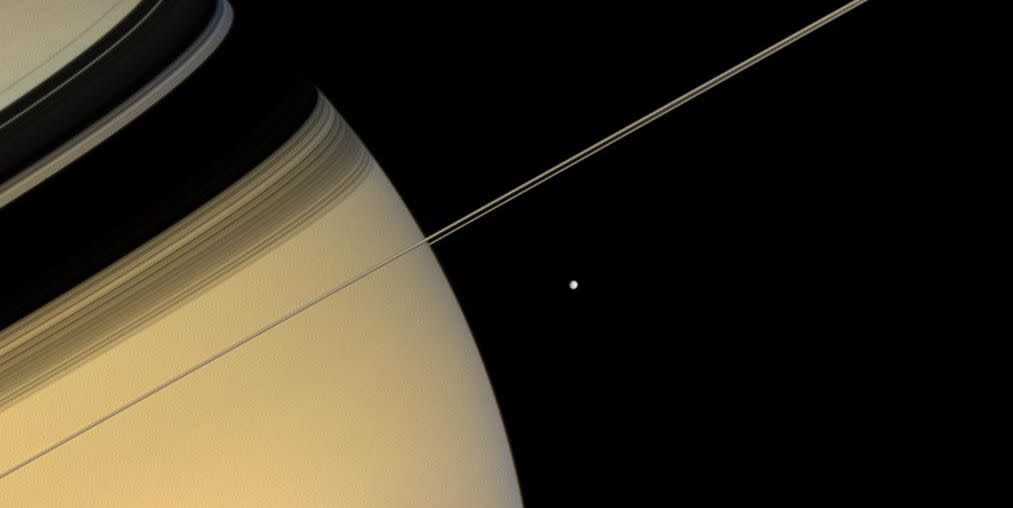All Hail Saturn, the New Moon King

"Hearst Magazines and Yahoo may earn commission or revenue on some items through these links."
Saturn just recently became the planet with the most moons in our Solar System.
At most recent count, it has 117 confirmed moons, leapfrogging Jupiter’s recent record high of 95 moons.
The title of “most moons” will likely continue to swap back and forth between our gas giants as we are increasingly able to find and track small, irregular moons.
Saturn has just become the new king of moons in our Solar System. As first reported by New Scientist, the International Astronomical Union (IAU) has announced the confirmation of 28 new satellites around the ringed planet. This takes Saturn’s total moon count to 117, passing Jupiter’s recently claimed record of 95.
Now, this might be a story you see repeated several times over the next few years, swapping back and forth between Jupiter and Saturn in the headline. They trade moon superiority all the time, partially due to the constant evolution of observational technology and partially because they’re just ... big.
Jupiter and Saturn are by far, outside the Sun, the largest objects in our Solar System. And objects that big have a lot of gravity, so they’re good at two things—attracting and disrupting. They can pull objects—especially small ones—into their orbits with ease, but those new interlopers can also disrupt other moons nearby. If there’s a collision involving a big enough moon, you can end up suddenly having several smaller moons instead.
Both of these causes are expected to have contributed to Saturn’s new lunar status. Especially considering that these moons aren’t like ours. They’re little oddballs called irregular moons—often strangely shaped, sometimes orbiting backwards, and needing only to be larger than about three kilometers in diameter.
Which is not a definition some astronomers agree with. There is so much of a difference between Saturn’s largest and smallest moons that some experts argue they should be in different categories entirely.
For now, though, they’re all together in one big “happy” moon family. And their discoverers are glad to see their work verified. These moons come from an analysis undertaken by a team of three astronomers at the University of British Columbia looking to catalogue all of the irregular moons around Saturn. The researchers reportedly expect even more of those moons to be confirmed in the near future.
And even when all of these recent potential moons have been sorted through, it’s unlikely that we will have catalogued all of the moons of our hulking gas giants. Estimates have placed the grand total moon numbers for both Jupiter and Saturn in the multiple hundreds—the team behind this recent Saturn leapfrog proposed in 2020 that an estimated 600 moons orbit around Jupiter.
But it will likely take us a long time to find that many moons, if we are ever able to. Moons of this size—which is what the vast majority of moons are expected to be—are hard to spot and hard to track, two things that make it very difficult to confirm their presence and orbit.
Expect counts to keep going up and titles to keep being stolen as time goes by and technology advances. But for now, Saturn wears the crown along with its rings.
You Might Also Like

